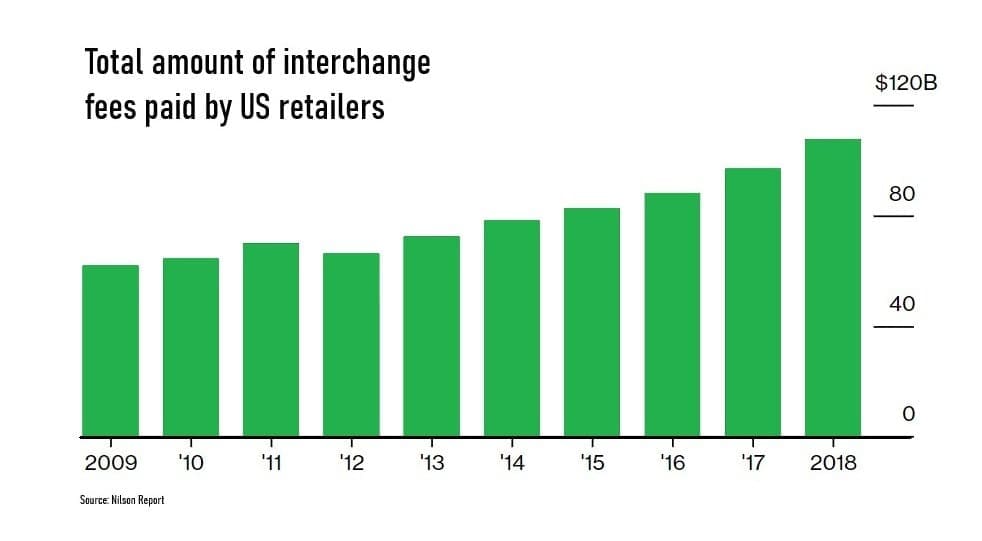The most significant changes in a decade are coming to VISA’s interchange fee structure according to numerous reports. Higher fees are coming for Card Not Present e-commerce and over the phone transactions, while lower fees are looming for real estate and education.
New Decade, New Strategy
VISA’s new structure strategy hopes to accelerate the abandonment of checks and increase acceptance of its cards in particular categories. For example, healthcare, education, and real estate businesses will all see lower fees under the new structure. To expand VISA card acceptance, VISA will now include categories for rent, parking, and vending machines.
Look for Mastercard which has historically followed VISA to make changes to its interchange structure as well.
The $100 Transaction
Here is what to expect when the changes start taking effect in April.
On a $100 transaction on a traditional VISA card, the fee will climb from $1.90 to $1.99, an increase of almost 5%. On premium or rewards cards, fees will rise from $2.50 to $2.60, an increase of 4%.
The fees for a $50 transaction on a premium or rewards card will drop roughly 33% from $1.15 to $0.77 when the changes go into effect.
Adding Fuel to the Fire
Merchants have long complained about the $100 billion they pay out each year to accept electronic payments. Merchants are quick to point out that banks now make more money in interchange fees, swipe fees account for $52 billion of the $91.2 billion earned on their credit card portfolios than the banks earn in interest on loans.
Rewards Cards are Driving Up Fees for Many Small Businesses
To grow revenue and income card-issuing banks have competed to offer the best premium or reward card programs to lure both consumers and businesses to their card brand. Premium or rewards cards have higher fees than traditional cards to cover the costs of these rewards programs.
The rapid rise in merchant paid fees since 2016 fueled by the dramatic shift in the number of transactions made on the higher interchange fee premium or reward cards.
Revisit Your Strategy
The cost increases coming in Card Not Present transactions, the fastest-growing category in electronic payments, 22.8% from 2016 to 2017 alone, is not the only assault on your margins. Card Not Present fraud losses are estimated to exceed $7 billion this year. Direct losses and efforts to prevent fraud will also add to costs further impacting your margins.
2020 is the Time for Small Business Owners to Review Their Pricing Strategies.
We recommend small business owners include the following questions in their review of their cost structures and pricing strategies.
- What impact will the interchange fee increases have on your cost and pricing structures?
- Is it time to raise prices across the board?
- Given the nature of your industry and competition, will you be able to increase your prices to cover your increased costs?
- Is it time to look at payment models that shift processing costs to cardholders who prefer the convenience and perks of using premium or rewards credit cards?
IntelliPay offers small business owners omnichannel payment acceptance without the proprietary merchant IDs, dedicated equipment and higher fees of other well-know providers plus the option of 100% compliant fee-based payment models that reduce or eliminate processing costs.
To get started or to learn which fee-based option is right for your business, schedule some time with one of our payment experts by calling 855-872-6632 or by emailing sales@intellipay.com.


